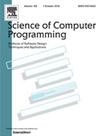Software architecture decision-making process: The practitioners' view from the Brazilian industry
IF 1.4
4区 计算机科学
Q3 COMPUTER SCIENCE, SOFTWARE ENGINEERING
引用次数: 0
Abstract
In the development of modern software solutions, architecture plays a crucial role in the success of the solution, as it comprises structural and behavioral features of the system, along with critical decisions about the system. Given this, several studies have been conducted in the literature about architecture decision-making process, but these studies are normally conducted with professionals outside of the Brazilian perspective or restricted to a specific company. Although architecture knowledge is the same, differences, like cultural behaviors, professional experiences and academic background, may arise. For this reason, this study presents the architecture decision-making from the view of Brazilian software practitioners. The results are a compilation of findings from 12 semi-structured interviews with senior practitioners from different companies and provide insights about the decision-making process. Regarding the context in which decisions are made, it is found that practitioners often guide and influence decisions and use experience as their main foundation, and the process is normally influenced by features of the company, like its domain and size. Concerning the decision-making process, practitioners in most cases use PoCs, organizational patterns or requirements to define the architecture. Group decision-making is often followed, although no systematic approach is used. Also, no tools are employed to support decision-making, and the decisions are documented and revised frequently.
软件架构决策过程:来自巴西行业的从业者的观点
在现代软件解决方案的开发中,体系结构在解决方案的成功中起着至关重要的作用,因为它包含系统的结构和行为特征,以及关于系统的关键决策。鉴于此,文献中已经进行了一些关于建筑决策过程的研究,但这些研究通常是由巴西以外的专业人士进行的,或者仅限于特定的公司。虽然建筑知识是相同的,但可能会产生文化行为、专业经历和学术背景等差异。出于这个原因,本研究从巴西软件从业者的角度提出了架构决策。研究结果是对来自不同公司的高级从业人员进行的12次半结构化访谈的结果汇编,并提供了有关决策过程的见解。关于决策的环境,我们发现从业者经常指导和影响决策,并将经验作为其主要基础,而决策过程通常受到公司特征的影响,如其领域和规模。关于决策过程,从业者在大多数情况下使用poc、组织模式或需求来定义体系结构。虽然没有使用系统的方法,但经常遵循群体决策。此外,没有使用任何工具来支持决策,并且经常记录和修订决策。
本文章由计算机程序翻译,如有差异,请以英文原文为准。
求助全文
约1分钟内获得全文
求助全文
来源期刊

Science of Computer Programming
工程技术-计算机:软件工程
CiteScore
3.80
自引率
0.00%
发文量
76
审稿时长
67 days
期刊介绍:
Science of Computer Programming is dedicated to the distribution of research results in the areas of software systems development, use and maintenance, including the software aspects of hardware design.
The journal has a wide scope ranging from the many facets of methodological foundations to the details of technical issues andthe aspects of industrial practice.
The subjects of interest to SCP cover the entire spectrum of methods for the entire life cycle of software systems, including
• Requirements, specification, design, validation, verification, coding, testing, maintenance, metrics and renovation of software;
• Design, implementation and evaluation of programming languages;
• Programming environments, development tools, visualisation and animation;
• Management of the development process;
• Human factors in software, software for social interaction, software for social computing;
• Cyber physical systems, and software for the interaction between the physical and the machine;
• Software aspects of infrastructure services, system administration, and network management.
 求助内容:
求助内容: 应助结果提醒方式:
应助结果提醒方式:


